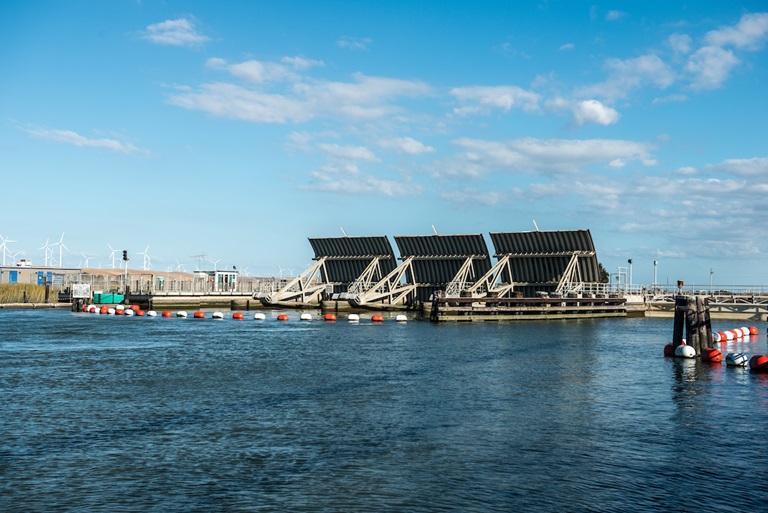DWR Water Flow Experiment Successfully Increases Habitat for Endangered Delta Smelt
Located at the eastern end of the Montezuma Slough in the Sacramento-San Joaquin Delta, the Suisun Marsh Salinity Control Gates maintain proper salinity levels in the Suisun Marsh during periods of low Delta outflow. DWR/2016
By experimenting with how salty ocean water mixes with fresh water within the Suisun Marsh, the Department of Water Resources (DWR) has found a way to improve habitat conditions for endangered delta smelt within the upper San Francisco Estuary.
DWR experimented in August 2018 with using existing water control structures, known as the Suisun Marsh Salinity Control Gates, to direct a pulse of fresh water from the Sacramento River into the salty Bay water of the marsh. Delta smelt move with the tides as they swim through the Delta and Suisun Marsh. The control gates were used twice a day for six hours during the ebb tide, allowing the marsh to fill with fresh water. The gates were closed at other times during the tidal cycle.
A newly published report on data collected from the 2018 experiment shows this action resulted in more habitat for delta smelt, a species listed in the California Endangered Species Act (CESA).
“We know delta smelt thrive in less salty water,” said Rosemary Hartman, DWR environmental program manager. “By using the Suisun Marsh salinity control gates to direct more fresh water into the marsh, we reduced salinity and improved habitat conditions for smelt during a critical rearing period of their life cycle.”
The delta smelt, a small, nearly translucent fish with steely-blue sides, is less than three inches in length. They can tolerate a wide range of salinity and temperatures but are generally found in brackish water (having more salinity than freshwater, but not as much as seawater) below 77 degrees Fahrenheit.
Historically, the Suisun Marsh has been an important piece of the puzzle when it comes to understanding ideal habitat conditions that delta smelt can survive in. The murky, low-salinity water of the marsh is not only ideal for smelt survival, but it also provides safety from predators and an abundant food supply.
“During drier periods, such as summer, the Suisun Marsh is often too salty for delta smelt,” said Dr. Ted Sommer, DWR’s lead scientist who directed the salinity control gate study. “This is also a critical time period for juvenile delta smelt rearing. The 2018 flow action resulted in a small number of the species colonizing Suisun Marsh from the Sacramento River, supporting our hypothesis that the flow action would have some benefit for this rare species.”
Up until 2018, the salinity control gates were only used during fall and winter months to lower marsh salinity levels for waterfowl hunting seasons. As a result of the successful 2018 flow action experiment, summer operations are now required by the Biological Opinion and Incidental Take Permit for operation of the State Water Project in most water years, starting in 2021.
